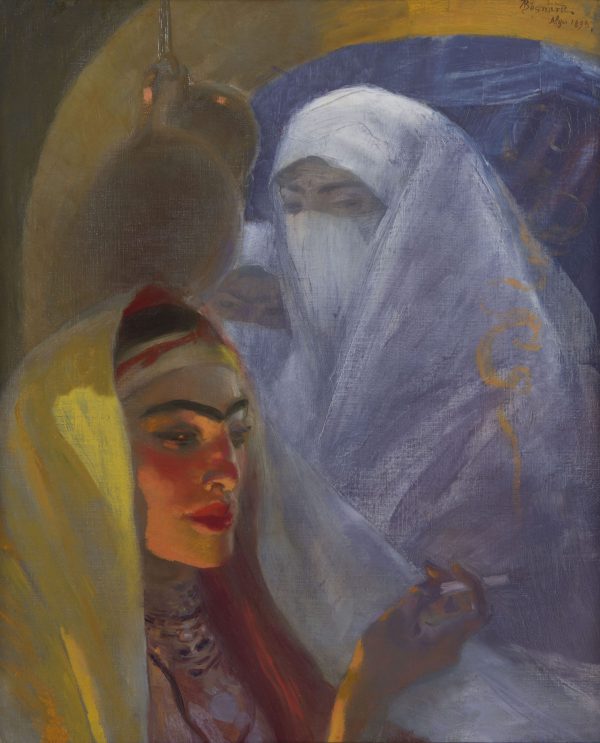Women of Algiers, 1893
Oil on canvas, H. 0.61 m; W. 0.5 m
Signed and dated upper right: ABesnard / Alger 1893.
Provenance: Private collection, France
Albert Besnard was trained at the École des Beaux-Arts where he was taught by Jean Bremond, a pupil of Ingres. While relating to the tradition of Art Concret it is his feeling for colour that would dominate. In 1874, Besnard won the Prix de Rome and left for an extended stay in the Italian capital. With his wife, the sculptor Charlotte Dublay, he then settled for three years in England. In 1913, he was appointed director of the Villa Medici in Rome and, in 1922, director of the Paris École des Beaux-Arts. Despite his official successes, Besnard remained an independent in the midst of the artistic movements of his time.
A remarkably prolific artist, Besnard excelled not only in the art of portraiture but also showed great talent in the painting of landscapes, often inspired by his travels. He was above all one of the great decorators of the 1900s. We owe him the decoration of several Parisian monuments such as the Hôtel de Ville, the vestibule of the École de Pharmacie, the chemistry amphitheatre of the Sorbonne, the ceiling of the Comédie-Française and the Cupola of the Petit-Palais. He created mural compositions or ceilings remarkable for their innovative iconography and choice of colour.
Our painting is representative of Besnard’s orientalist side. Strongly attracted by the Orient, he travelled to Spain and Morocco (1881), Algeria (1893) and even to India (1911). These journeys had a profound effect on him and would be the occasion to renew iconography and to free himself from all academism, composing freely luminous orchestrations with intense colours.


